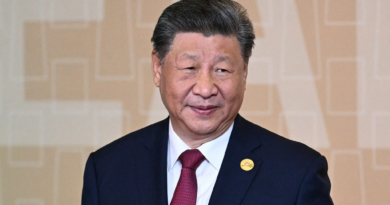Building AI models is an "enormous waste of social resources," says Baidu CEO one month after his company released its latest AI model
The tech industry is too focused on foundational AI models instead of the potentially booming business of developing artificial intelligence based apps.
Baidu CEO Robin Li believes major tech players, working toward building the underlying models powering the current rise of AI should direct their efforts elsewhere. Namely, they should focus on developing AI-powered applications built on top of the models.
“Constantly redeveloping foundational large models represents an enormous waste of social resources.” Li said at an industry event in Shenzhen. “In the AI-native era, what we need are AI-native applications at a scale of millions.”
Foundational models have hundreds of millions, even billions, of data points, which make them difficult and costly to develop for all but the most sophisticated tech companies.
“A large language model itself is a basic foundation akin to an operating system, but ultimately developers need to rely on a limited number of large models to develop various native applications,” Li said.
Baidu did not respond to a request for comment.
Many of the biggest tech companies in both China and the U.S. have already released their own foundational models. The race to own the operating system of the future is well underway.
Last month, Baidu unveiled its latest AI model, Ernie 4.0, which it said could compete with OpenAI’s latest release, GPT-4. OpenAI became the benchmark for AI models when it debuted its ChatGPT AI-powered chatbot in November 2022. Alibaba, Baidu’s peer in China, also has its own model, which it made open source in an effort to compete with Llama 2 from Meta, which has become a vocal supporter of open source innovation in AI. (Meta still requires companies with over 700 million monthly active users to get a special license if they wish to use its Llama 2 model). Amazon adopted a slightly different strategy, releasing its own model Titan, while also offering access to models from other developers via a subscription. Catching up with these companies, among the most dominant in tech, is improbable and ultimately fruitless, Li argued.
He said AI development should follow in the footsteps of the smartphone revolution. After smartphones became popular and affordable, companies started introducing a wide variety of apps, some of which became major tech companies in their own right. He cited examples like Uber and Douyin, the Chinese version of TikTok.
“To date neither in China nor the US have we witnessed the emergence of the best AI-native applications,” Li said.
Chinese companies have created a number of competing AI foundation models, as startups and big tech firms try to elbow their way into the market. An executive from Tencent, the Chinese company that operates the popular messaging app WeChat, said the “war of a hundred models has begun” in China. Analysts have started to sour on all the rivals, which they consider too similar to each other. They’re also concerned new entrants will struggle to gain a foothold against entrenched, bigger players. Baidu’s stock dipped 3% the day it released its AI model.
Li’s comments take a different approach than those of OpenAI CEO Sam Altman, who speculated that ever bigger models might be supplanted by smaller ones tailored to specific use cases. “I think we’re at the end of the era where it’s gonna be these giant models, and we’ll make them better in other ways,” Altman said at an MIT event in April.
Because of the difficulty and expense of building these models, they are generally concentrated in the hands of a few tech companies, making them flashpoints for questions about transparency in AI development. A study from Stanford University found that 10 of the biggest AI developers in the U.S. all failed a “transparency test” meant to evaluate the origin of their data and how that data and the resulting models are used.
China’s government has also sought to regulate how large AI models are built and regulate how they’re used. In July, China’s Cyberspace Administration released what were some of the world’s first government regulations governing the use of AI. Those new rules could also serve to winnow the field of AI models in China.
Update, Nov. 15, 2023: This article has been updated to include a comment from Baidu.




